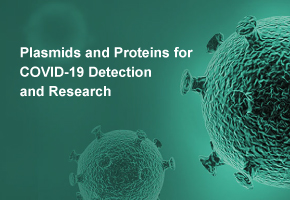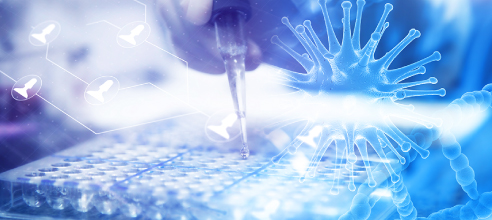What are the non-viral vectors for gene therapy?
Non-viral vectors for gene therapy are non-viral vehicles (particle based or chemical based) that deliver the genetic material into a wide variety of cells, tissues and whole organs to treat or improve the health condition of the patient (Murali R and Aparna N, 2015).
Overall Process
DNA,
mRNA and small RNAs (such as siRNA and miRNA) can be ferried by various
non-viral vectors. Those vectors were introduced into blood vessel and
extravasate from the bloodstream to reach target tissues. In the target tissue,
siRNA and miRNA mimics must be loaded into the RNA-induced silencing complex
(RISC), whereas mRNA must bind to the translational machinery. DNA has to be
further transported to the nucleus to exert its activity.
The process of nucleic acids
delivery using non-viral vectors (Hao Y et al., 2014).
Advantages
Although only less than 30% of gene therapy clinical trials carried out so far have
used non-viral vectors to deliver genes, non-viral vectors has the potential to
address many limitations associated with viral vectors, including
carcinogenesis, immunogenicity, broad tropism, limited DNA packaging capacity
and difficulty of vector (Hao Y et al., 2014). Use of non-viral vectors in clinical trials increased in recent years due to their low host immunogenicity, high
level of bio-safety and simple large scale production.
Methods
In the past decades, substantial advances have been achieved in
gene therapy related to non-viral vectors, including the development of new
physical and chemical methods to enhance delivery.
Physical methods
(1) Simple Injection. This is
the easiest way of DNA transfection. In
some reported cases, a naked DNA plasmid or a naked PCR product
has been successfully expressed through intramuscular injection. However,
the expression has not been as high as that of other methods of transfection.
(2) Gene gun. Gene gun, or the use
of particle bombardment, is
another physical method of non-viral transfection used to deliver
exogenous DNA, RNA, or protein to cells. In this
technique, DNA is coated onto gold particles and loaded into a device which
generates a force to achieve penetration of the DNA into the cells, leaving the
gold behind on a "stopping" disk. Gene guns are mostly used with
plant cells. However, there is much potential use in humans and other animals as
well such as delivery of DNA vaccines or vital dyes to cells (Gan W et al., 2000).
(3) Electroporation. Electroporation is
a microbiology technique in which an electrical field is applied to cells in
order to increase the permeability of the cell membrane, allowing chemicals, drugs, or DNA to be introduced into the cell ( Neumann E et al., 1982). In gene therapy
clinical trials, short pulses of high voltage were adopted to cause temporary
formation of pores in the cell membrane, allowing DNA molecules to pass
through. Electroporation is generally
efficient and works across a broad range of cell types. However, its clinical
applications are limited due to high rate of cell death following
electroporation.
(4) Sonoporation. Similar
to electroporation, sonoporation is another physical way
(sound, typically ultrasonic frequencies) to modify the permeability of the
cell plasma membrane. In non-viral gene therapy application, sonoporation allows uptake of
large molecules such as DNA into the cell.
(5) Magnetofection.
Magnetofection is a simple and highly efficient transfection method that uses
magnetic fields to concentrate particles containing nucleic acid into the
target cells ( Christian P et al., 2011). Magnetic force directs
vectors towards target cells resulting in rapid and highly efficient nucleic
acid delivery.
Use of magnetofection in viral and non-viral related gene therapy
( Christian P
et al., 2011)
(6) Hydrodynamic delivery. This technique is one of non-viral methods developed originally for intracellular gene delivery but later found applicable to delivery of other macromolecules such as oligo nucleotides, RNA, proteins, and the compounds that are not permeable to cell membrane ( Barbara B et al., 2011). Its transient and minimal toxicity together with unprecedented delivery efficiency has made the hydrodynamics-based transfection the most desirable procedure to study the function of coding or non-coding sequences in whole animals.
Chemical methods
(1) Oligonucleotides. Oligonucleotides are chemically synthesized short DNA or RNA molecules that have a wide
range of applications in genetic testing, research, and forensics. The use of them in gene therapy
is to deactivate the genes involved in the disease process. For instance, antisense specific to the target gene can be used to disrupt the
transcription of the faulty gene; siRNA can be adopted to signal the cell to
cleave specific unique sequences in the mRNA transcript of the faulty gene,
disrupting translation of the faulty mRNA, and therefore expression of the
gene.
(2) Lipoplexes. To improve the delivery of the new DNA into the
cell, the DNA must be protected from damage and positively charged. Cationic
liposomes, another type of non-viral vehicles, have favorable interactions with
negatively charged DNA and cell membranes ( Sergio
Set al., 2005). The formed complex of DNA and cationic liposomes in gene therapy is defined as Lipoplexes. The most
common use of lipoplexes has been in gene transfer into cancer cells, where the
supplied genes have activated tumor suppressor control genes in the cell and
decrease the activity of oncogenes. Recent studies have shown lipoplexes to be
useful in transfecting respiratory epithelial cells.
(3) Polymersomes.
Polymersomes are a class of artificial vesicles, tiny hollow spheres that
enclose a solution ( Discher B et al.,1999). Polymersomes are made
using amphiphilic synthetic block copolymers to form the vesicle membrane, and
have radii ranging from 50 nm to 5
µm or more. Compared with lipids, the increased length and conformational
freedom of polymer chains not only provide a basis for enhanced toughness and
reduced permeability of membranes but also suggest that the rich diversity of
block copolymer chemistries (molecular weights, block fraction, block
architecture) portends a plethora of novel, artificial membranes.
(4) Dendrimers. Dendrimers are
repetitively branched molecules capable of being cationic. When in the presence
of genetic material such as DNA or RNA, charge complementarity leads to a
temporary association of the nucleic acid with the cationic dendrimer. On
reaching its destination the dendrimer-nucleic acid complex is then taken into
the cell via endocytosis. Producing dendrimers has historically been a slow and
expensive process consisting of numerous slow reactions, an obstacle that
severely curtailed their commercial development.
(5) Inorganic nanoparticles.
Inorganic nanoparticles, such as gold, silica, iron oxide and calcium phosphates
have also been shown to be capable of gene delivery ( Darcy W and Sarit B, 2011) .
(6) Cell-penetrating
peptides. Cell-penetrating peptides (CPPs) are short peptides that facilitate
cellular intake/uptake of various molecular equipment. Cell entry occurs
primarily by endocytosis but other entry mechanisms also exist. Examples of
cargo molecules of CPPs include nucleic acids, liposomes, and drugs of low
molecular weight ( Dana C et al., 2014).
- Like (5)
- Reply
-
Share
About Us · User Accounts and Benefits · Privacy Policy · Management Center · FAQs
© 2025 MolecularCloud



